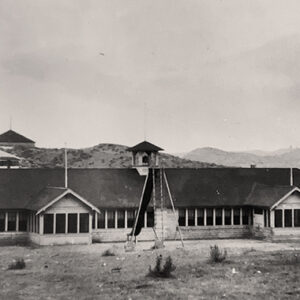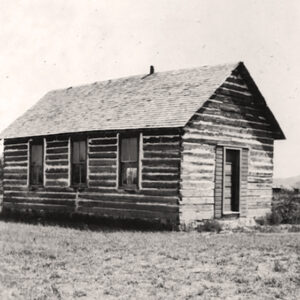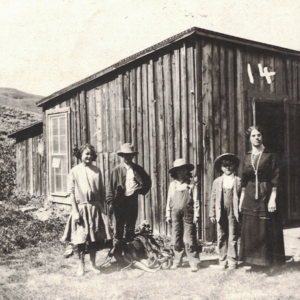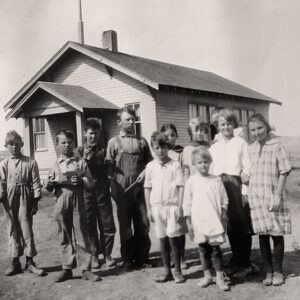The Wyoming Rural School Experience offers a unique opportunity to learn about education in rural Wyoming in the 1920s. This program offers an Onsite Immersion Experience which takes place at the Middleton Rural Schoolhouse at the Hot Springs County Museum in Thermopolis, Wyoming.
Wyoming Rural School Experience
Students act as the pupils from the 1920s, dress in costume, sit at wooden desks, practice lessons on slates, and play an old-school recess game. The teacher is dressed in 1920s clothing and conducts the class in character. Some characters are the actual students that attended the Middleton School. This program is for 3rd and 4th Grades only. The schoolhouse can accommodate up to 24 students and 5-6 chaperones. Minimum of 12 students.
Frequently Asked Questions
Please feel free to contact the Hot Springs County Museum for any questions you may have.
Please call 307-864-5183 for registration fee. Please bring a check (written out to the Hot Springs County Museum) or cash for payment on the day of the experience.
There is room to park a bus right next to the museum. Please advise museum staff ahead of time so that we can block off that space with orange cones prior to your arrival.
There are only two restrooms at the museum. Have students use the restroom before leaving your school or use a higher-capacity public restroom prior to arriving at the museum. If a student needs to use the restroom during the experience, a chaperone will need to accompany them across the street from the schoolhouse to the museum, and back to the schoolhouse.
Students will be given a name tag that describes a student of the 1920s. On the back of the name tag will be information about their family. Students will be asked to pretend to be that person throughout the school day. Museum staff will explain this concept at the beginning of the day. Some characters will be older or younger than the student wearing the tag. Many of the characters on the tags will be sisters, brothers or cousins of other characters. Many of the characters are based on actual families that lived in Hot Springs County in the 1920s. The teacher will also be in costume and will stay in character throughout the experience. Click here for more information.
At the beginning of the day, after the museum staff welcomes the students and gives them an overview of the day, students will be asked to line up by size, and staff/volunteers/chaperones will help them choose up to two costume accessories that can be worn over their regular clothes. Girls will be offered a hat and an apron or smock; boys will be offered a hat and overalls or vest. Wearing a costume is not mandatory.
Students should bring a cold lunch. Lunch will be eaten either on the grass outside the schoolhouse or at the students’ desks in case of rain or snow. The students will be asked to put their lunch in a tin pail lined with a cotton bandana (both provided by the museum.) It is recommended that they bring food that students would have back in the 1920s: a sandwich; cold leftovers; fruit; vegetables; baked goods. To make it more authentic, items should be wrapped in wax paper, brown paper or a napkin. There were no plastic bags back then! A bucket of clean drinking water and a ladle will be provided to the class, and each student will get their own tin drinking cup. It is preferred that the students do not bring a bottled drink into the schoolhouse.
Teachers and chaperones are asked to accompany their students during the experience. Bench seats in the back of the classroom will be available for adults. Museum staff would greatly appreciate help from the teachers and chaperones to help students choose and put on their costumes. Teachers and chaperones will be asked to accompany students back to the museum if they need to use the restroom.
Students will be asked to sign an optional photo release form prior to arriving. The museum may use photos to promote the program if consent is given.
The Pledge of Allegiance was written in 1892 as follows:
I pledge allegiance to my flag and to the Republic for which it stands,
one nation indivisible, with liberty and justice for all.
This pledge will be written on the board for students to recite at the opening of the school day.
The Term “my flag” was changed to the “the flag of the United States of American” in 1923. In 1954, the phrase “under God” was added.
The Hot Springs County Museum welcomes all age-appropriate students to participate in the Wyoming Rural School Experience. Most special needs students can be accommodated. Teachers should check with museum staff prior to the experience to see if the experience would be appropriate and enjoyable for their special needs students.
History of Wyoming School Districts
Project History
The Hot Springs County Museum and Cultural Center has a rich history steeped in Wyoming culture. In 1929, Dora McGrath, eventually Wyoming’s first female senator, founded the Hot Springs County Pioneer Association with the dream of one day building a museum. In 1941, this dream became a reality.
In 1976, the Museum was moved to its current location on Broadway Street in Thermopolis, Wyoming. The Middleton School, a one-room schoolhouse built in the early 1920s and complete with wooden desks and a piano, was moved from its original rural location along Owl Creek to the museum site in Thermopolis. It was restored and opened to the public in 1983.
In 2020, the Museum applied for an Inspire! Lifelong Learning grant from the Institute of Museum and Library Services. This grant funded the development of the Wyoming Rural School Experience Program and the associated museum exhibit about the history of rural schools in Hot Springs County. Grants from local and state foundations (The Wyoming Cultural Trust Fund, The Glade Edwards Foundation, The Hot Springs County Education Endowment, and the Owl Creek Foundation) funded the structural improvements and the installation of electrical power which were needed to make the program available year-round.
This program was created by a project team of dedicated volunteers, museum staff, and experts in education, storytelling, videography and costume design from around the state.
The Wyoming Rural School Experience was made possible by the generous financial support from the following organizations:
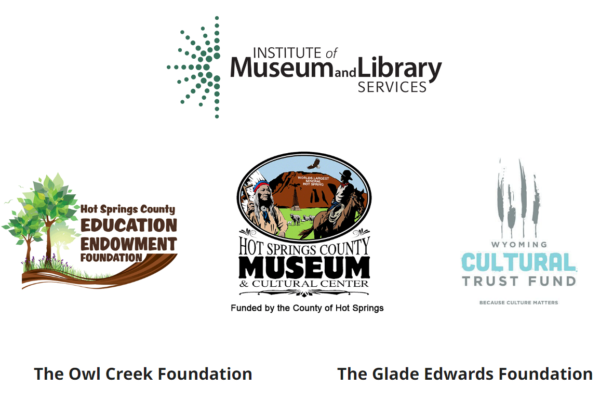
Sample Schedule
9:15 am
Welcome and orientation in museum lobby. Students receive costumes and character tags.
10 minutes
Classroom Opening Routines, Announcements
20 minutes
Arithmetic Lesson
20 minutes
Recess (games, chores)
20 minutes
Reading/Vocabulary/Writing Lesson
20 minutes
Geography Lesson
30 minutes
Lunch
20 minutes
Spelling/Phonics/Handwriting
20 minutes
End of Day Routines, Chores, Class Photo with Teacher
20 minutes
Dismiss and Debrief; journal writing exercise



